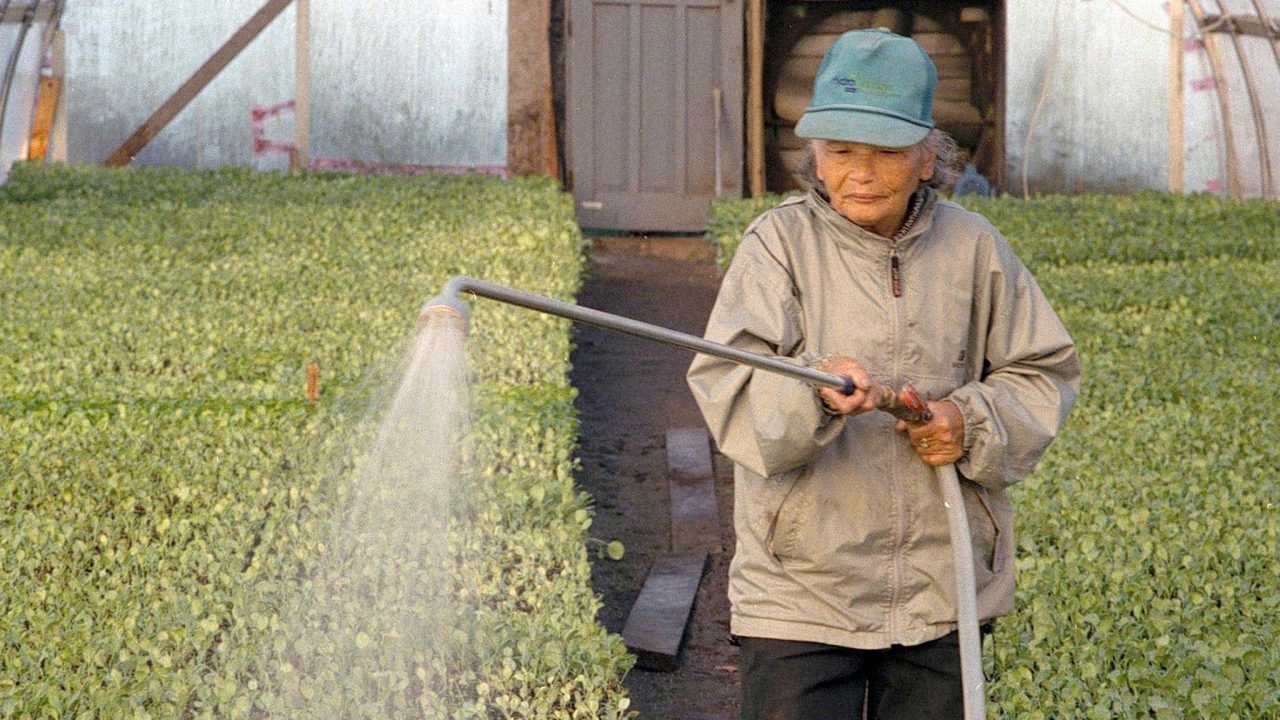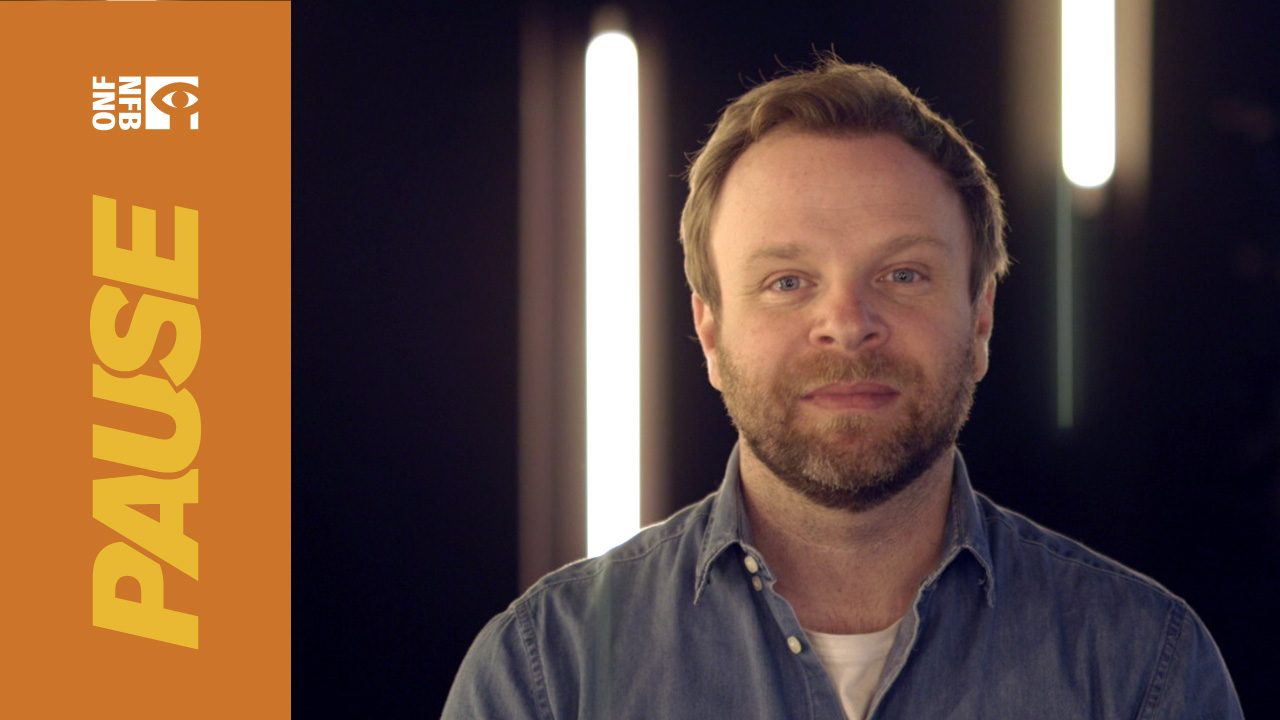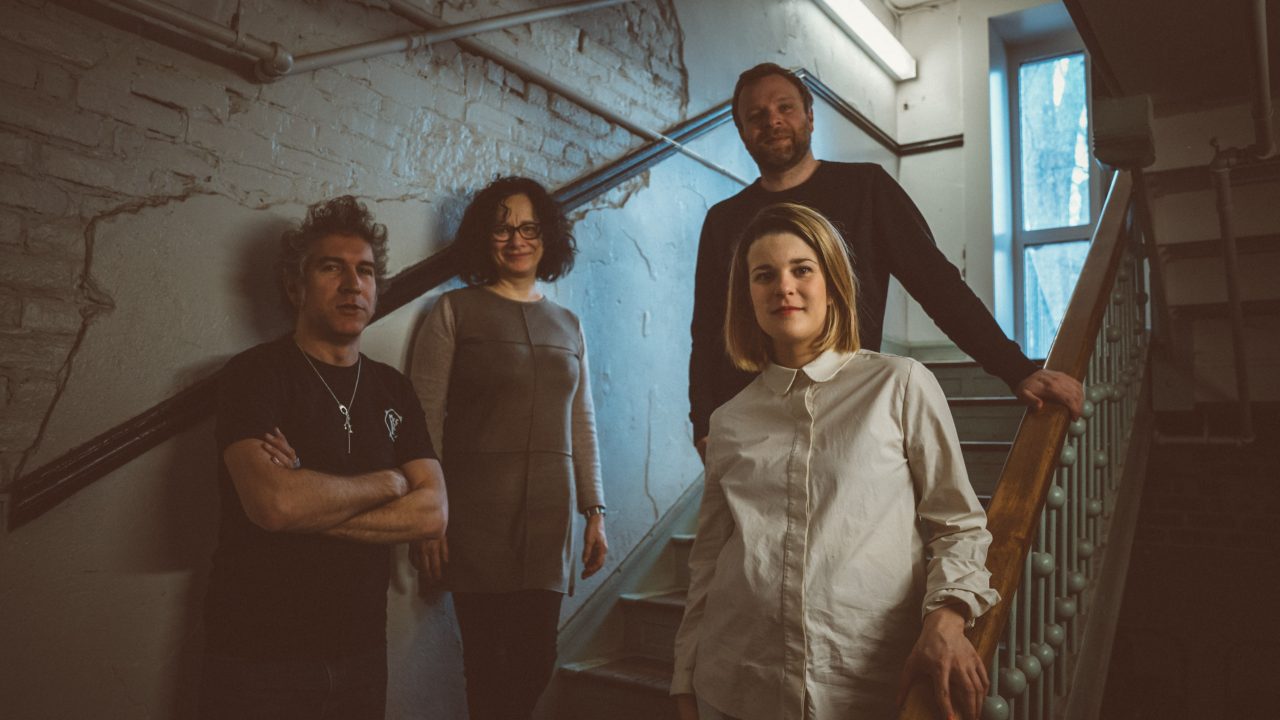
Using virtual reality to better understand the plight of asylum seekers
Using virtual reality to better understand the plight of asylum seekers
Can virtual reality (VR) make us more empathetic, help us face things that are beyond our day-to-day experiences, and perhaps even spark social and political change?
As the migration crisis continues to make headlines, photographer Michel Huneault has tackled the issue through an installation called Roxham, with a little help from designer Maude Thibodeau and sound designer Chantal Dumas (in a partnership between the NFB, Le Devoir, the Phi Centre, and the studio Dpt.).
On March 24, in an article entitled “Migrants sur la route de l’espoir” (migrants on the road to hope), Le Devoir cited the following number: 24,980. The article went on to specify that this was the number of requests for asylum made in Quebec in 2017, and that the number of people who slipped in secretly was unknown.
On social media, the daily founded by Henri Bourassa asked its readers the question, “Did you know that any individual can request asylum at the Canadian border? A person cannot be ‘illegal’ here.”
Between February and July 2017, Michel Huneault spent 16 days on Roxham Road in Saint-Bernard-de-Lacolle, in Quebec’s Montérégie region. He recorded over 180 attempted crossings by people from 20 different countries, including Eritrea, Pakistan, Turkey, Yemen, Haiti, the Philippines, and Nigeria.
From these events, Huneault drew the 32 stories that make up the searing accounts at the heart of Roxham, an interactive WebVR work that takes us “to the end of this road, which has become a road of hope.” Using an ingenious camera setup, through which asylum seekers appear as composite silhouettes (covered with textures taken from another series of photographs dating from the 2015 migration crisis in Europe), the installation reminds viewers that the phenomenon is part of an ongoing, planet-wide story.
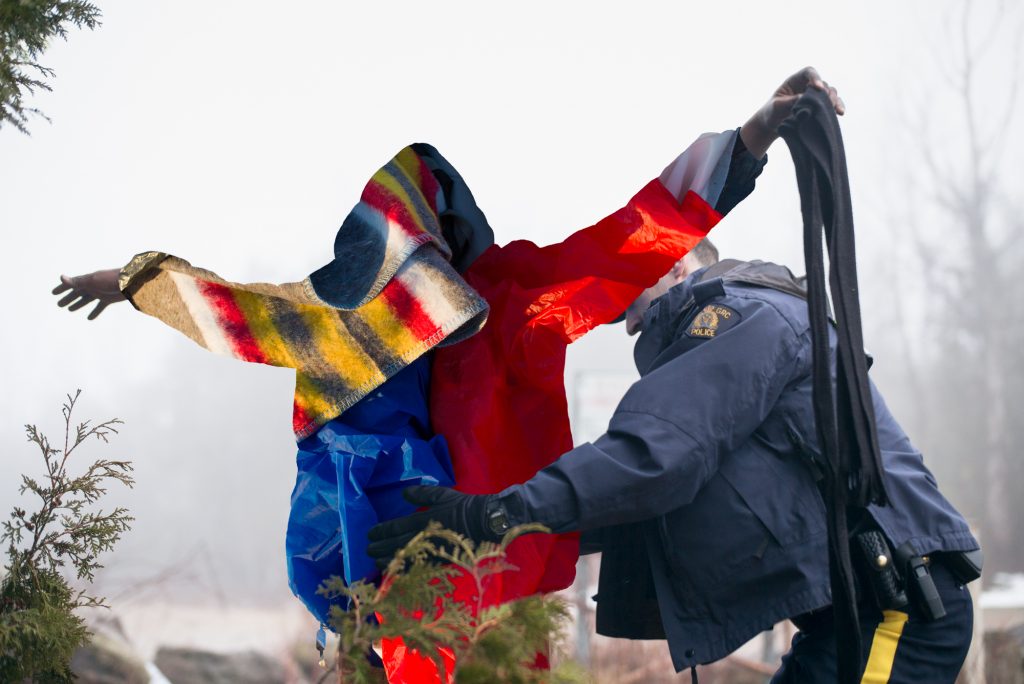
While the issue of irregular asylum seekers continues to be debated in the Quebec National Assembly and in federal parliament, a great deal of false information is being spread about the plight of these arrivals from around the world. Even very recently, on May 19, a protest and counter-protest at Saint-Bernard-de-Lacolle pitted extreme-right identitarian groups and pro-immigration activists against each other.
Just one more reason to observe what access to first-hand information can bring to this issue—and what investigative journalism can accomplish when it encounters art.
In the shoes of an asylum seeker or a border agent
On a strikingly ordinary spring day in Montreal, Michel Huneault, designer Maude Thibodeau, sound designer Chantal Dumas, and producer Hugues Sweeney gather in a café adjoining a heritage home that once belonged to photographer William Notman. They react cautiously to an opening question: “Can virtual reality make us more empathetic?”
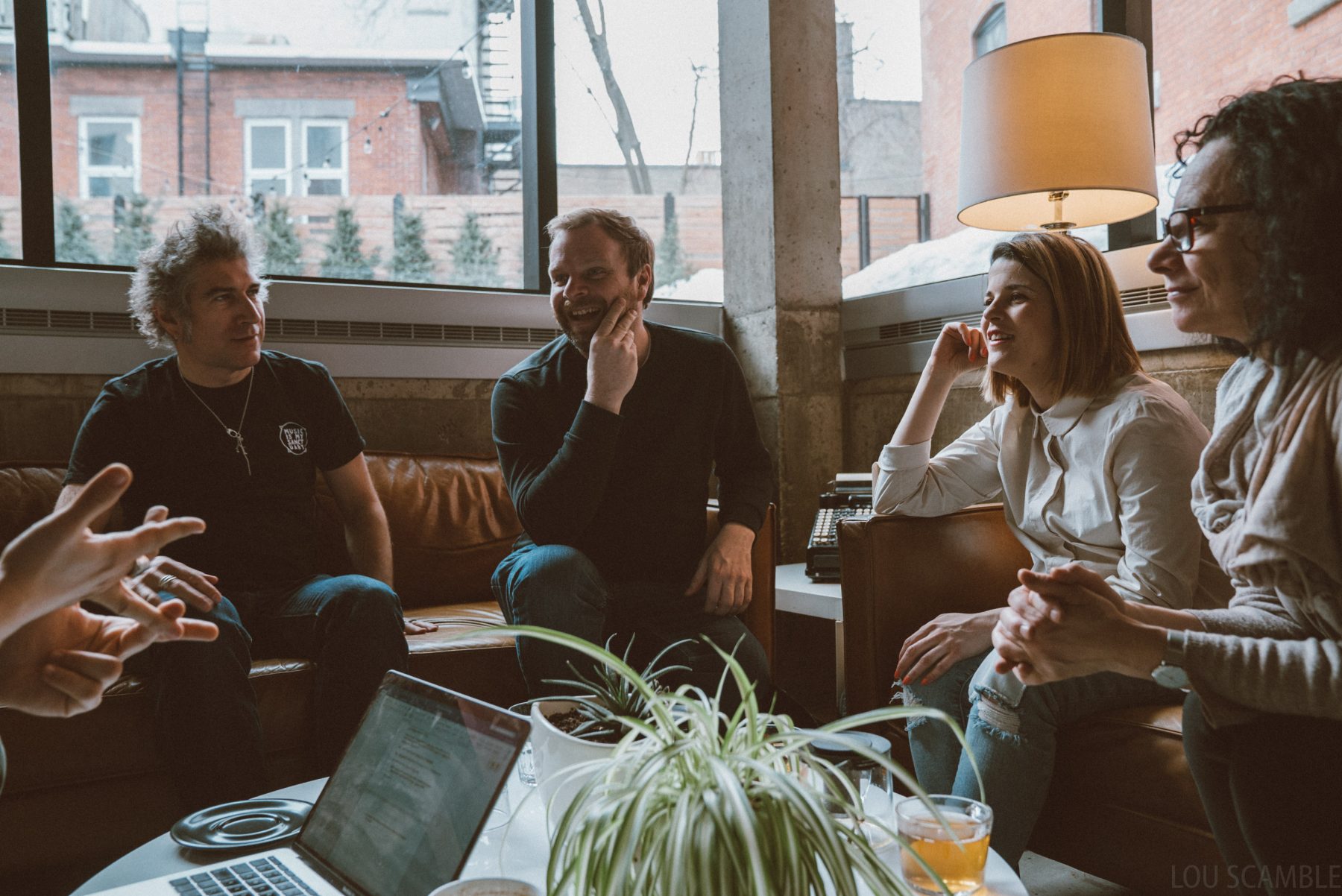
Hugues Sweeney, Michel Huneault, Maude Thibodeau and Chantal Dumas (Photo : Lou Scamble)
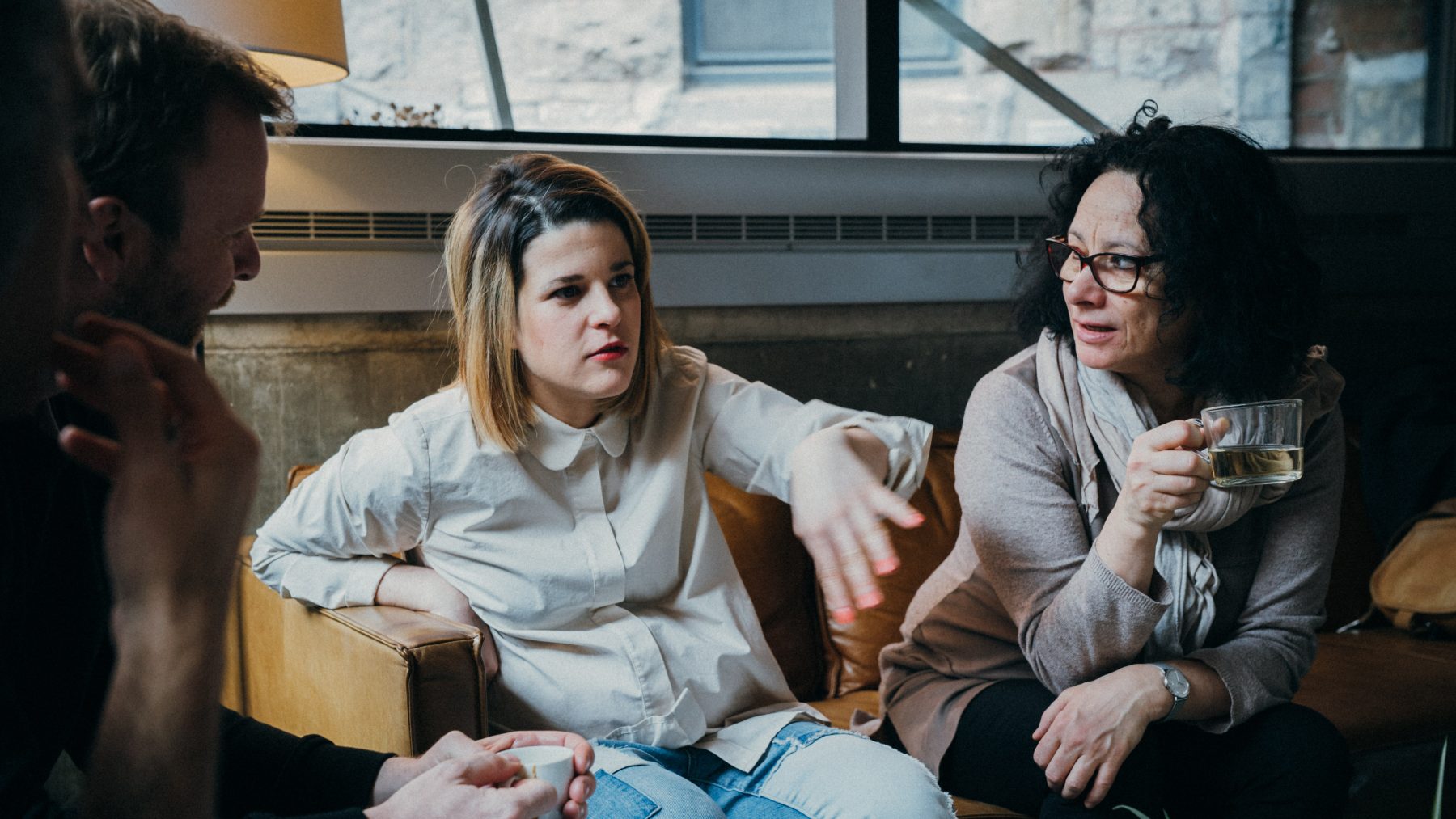
Michel Huneault, Maude Thibodeau and Chantal Dumas (Photo : Lou Scamble)
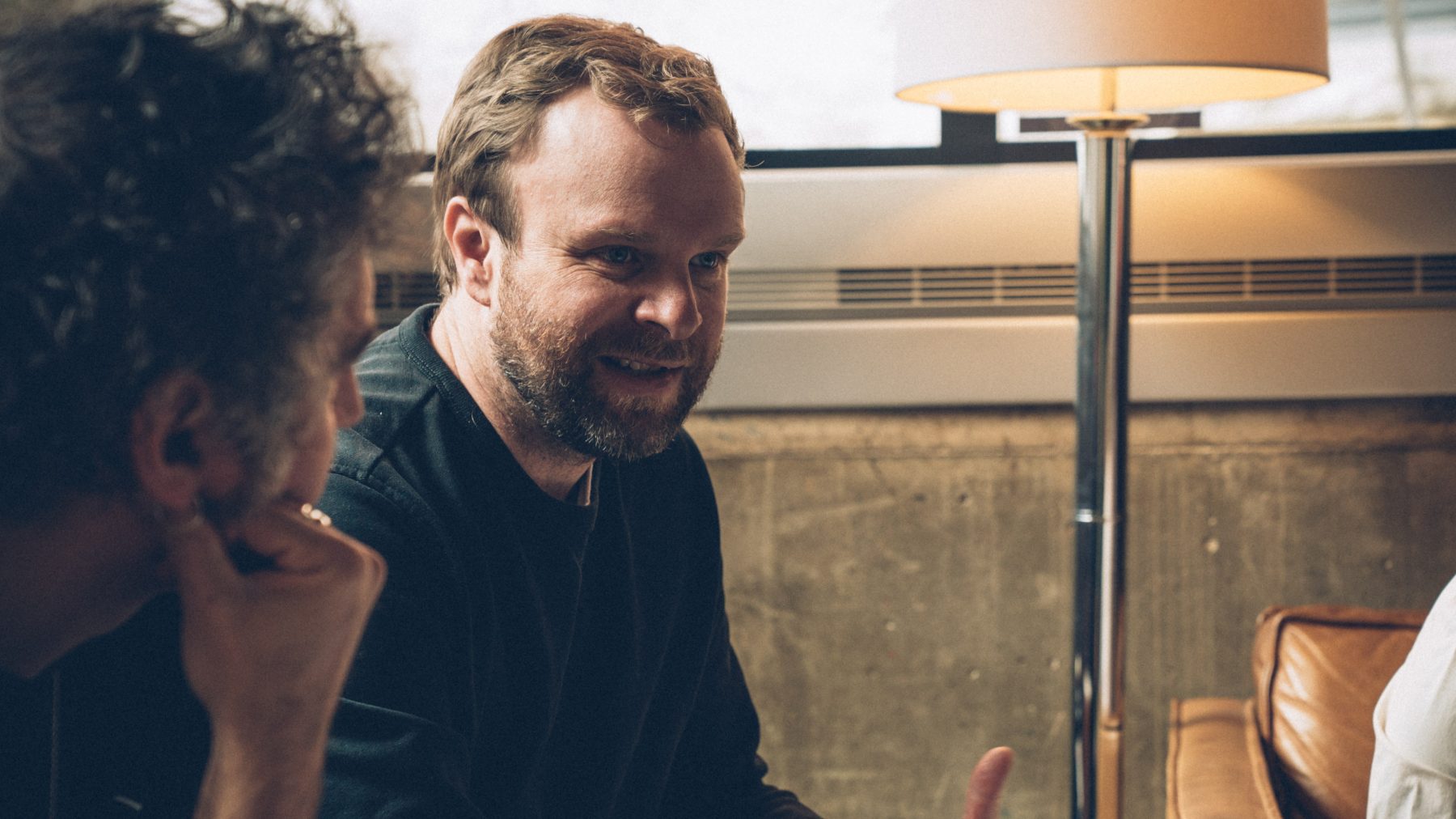
Michel Huneault (Photo : Lou Scamble)
Huneault hesitates before answering: “I’m not sure about empathy. Based on many of the comments I’ve received, our project is first and foremost an experience of intersubjectivity. You can experience being the agent, the asylum seeker, the photographer, or the observer. That’s sort of the project’s strength—its accidental quality.”
Thibodeau, artistic director of Dpt. and designer of Roxham, feels that if the project creates empathy, that empathy shifts around a great deal. “I hope above all that Roxham elicits questions at every level,” she says.
Dumas, who designed the immersive project’s soundscape, believes that the camera movement, which allows viewers to cross the boarder in virtual reality, is particularly noteworthy. “When I tried it, I was physically projected… For me, the experience produced a sense of fragility, a loss of balance.”
While both sides of the border can be seen, Huneault did everything on Canadian soil. “I had been closely following the 2015 migrant crisis, and I had just been working on a major story for Le Devoir about diasporas in Quebec. It was published on January 28, 2017. But the next day, January 29, the story was buried by the shooting at the Great Mosque of Quebec City.”
Vulnerable people
When Huneault travelled to Roxham a few weeks later, the first person he saw was a pregnant woman. She was alone.
“She didn’t cross. Up until then, we had mostly covered the human side of the RCMP during their interventions. I wanted to see if there would be a change. From the start, I wondered how I could document everything without putting vulnerable people at risk.”
Which is where he got the idea of using textiles photographed during the 2015 crisis.
“I cried in my kitchen”
Sweeney is a producer at the NFB’s Digital Studio, which has produced more than 80 projects to date. He’s the one who allowed Roxham to truly take shape. At the end of a meeting with Huneault (who had worked with the NFB on occasion before), the photographer mentioned a series of images and sound recordings taken on Roxham Road.
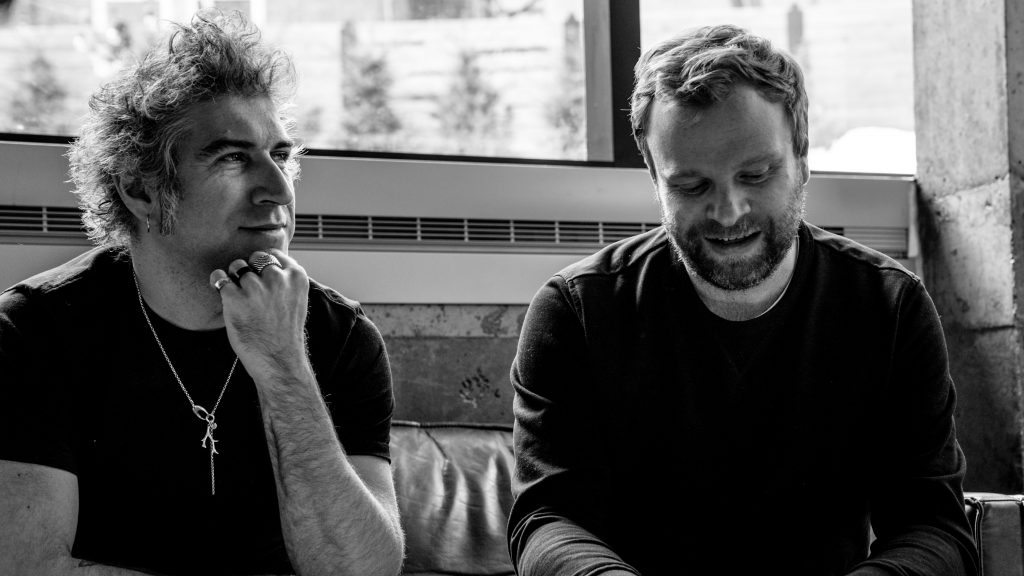
“Michel gave me a copy of his book on Lac-Mégantic. And then he said, ‘I have these other photos I’ve been working on too.’ The next day, he sent me 10 pictures and an audio file. I listened to it at home, and I cried in my kitchen.”
By employing the talents of sound designer Chantal Dumas, Roxham was able to expand the dimensions of its journalistic reporting.
“With this type of experience, sound is what creates a sense of space, especially when it’s recorded binaurally [which produces a more natural, 3D sound sensation]. It has a strong impact. You’re in the countryside and then—wham!—you have to cross a border. It’s like a dream. The sound provides a familiar temporal connection, but as you wander about, the experience takes you elsewhere.”
This is how the setting’s utter normality gives substance to an experience where the drama intrudes into reality. Much like reporting from conflict zones, Huneault feels that we must document this “normalcy” to truly understand the issues, and this project does that. “Bringing it all together was a home run,” states Huneault.
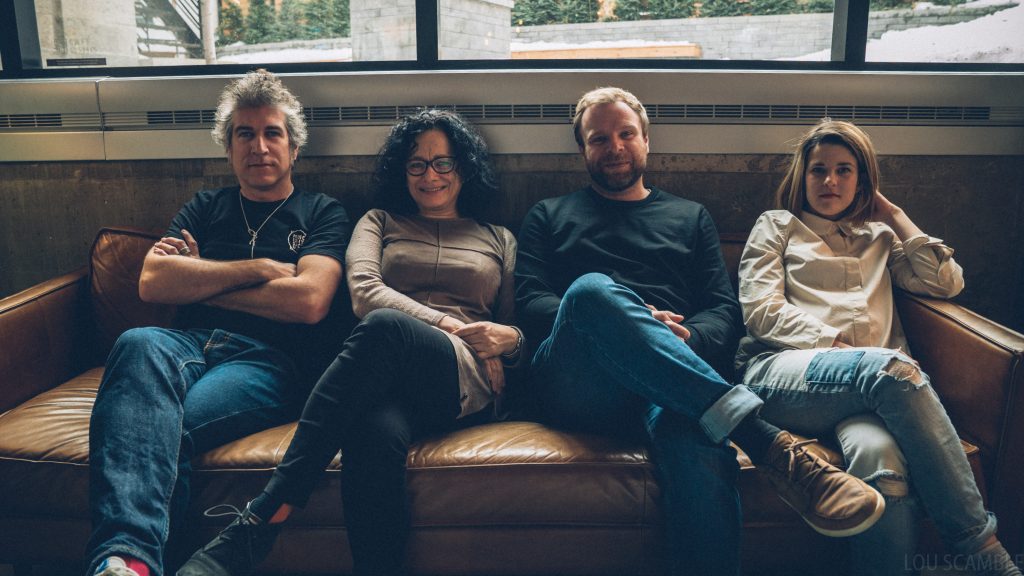
Danger line
But there is one question hanging over Roxham: Where exactly is the thin line between “documenting” and “exploiting” a human subject? Huneault thought long and hard to find the difference between the migration crisis of 2015 and that of 2017. “In Europe, the citizens interacted with the migrants, which changed the relationship. Here, it’s different.” Which is what makes it suitable for VR.
Huneault met a Quebec family while shooting in Roxham. “The parents wanted their children to see what was happening. I remember the father telling me, ‘I don’t know if I’m for or against it, but I want my children to see it.’”
Huneault worked on the project for six months. He learned to keep his gear to a minimum and move quickly. “You get out of the car and you start shooting. After a few trips, I figured out where to position myself. The RCMP knew I was a journalist and had a press card. I wasn’t the first or last person to work there. But some agents would still say things like, ‘We’ve seen you here for a long time, but we never see your photos.’”
By the project’s end, he had documented 180 crossings of people from 22 countries. And that was without even witnessing the flood of Haitian asylum seekers in the fall of 2017.
The RCMP has since erected a fence 100 metres from the border. It is no longer a wild, remote area; the experience will clearly never be the same for anyone. And in a way, this is where the real border and the danger line overlap—under the watchful eye of those for whom an imaginary line between two countries has perhaps become the most concrete thing there is.
Follow Ralph Elawani on Twitter: @RalphElawani
Photos by Lou Scamble
